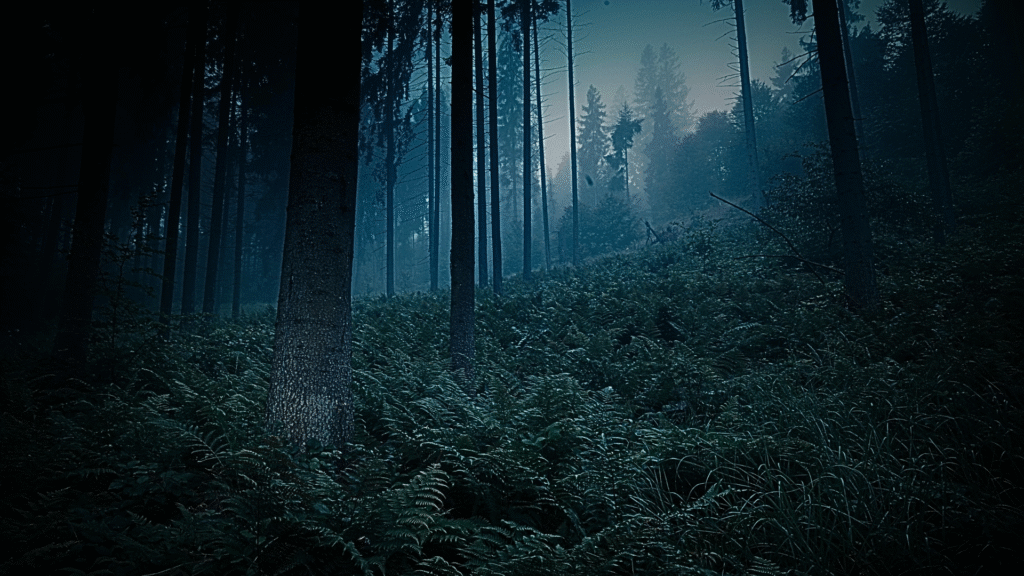Beneath the shadow of Japan’s sacred Mount Fuji lies a forest so still, so dense, and so otherworldly, it feels like stepping out of reality. It’s not just the silence that surprises you—it’s what that silence seems to say.
Welcome to Aokigahara, the Sea of Trees. A place of stunning natural beauty, but also a canvas for the most fragile parts of the human soul. It’s not just a forest. It’s an emotion.
Born from Fire, Grown in Silence
Aokigahara didn’t begin as a place of darkness. Over a thousand years ago, Mount Fuji erupted violently, spilling molten lava across the land. In the decades that followed, from this volcanic bedrock, nature stitched together something wild and extraordinary — a lush, tangled forest stretching over 30 square kilometers.
What grew from that destruction was not just vegetation but an atmosphere — thick, sound-absorbing, and hauntingly quiet. The porous lava beneath your feet swallows sound. Even the birds seem to whisper. Here, the world feels paused, like you’ve wandered into a memory still forming.
The Pathless Path
Wander off the main trails, and the forest begins to wrap itself around you. Branches twist like ancient fingers. The roots snake over rocks, making it easy to trip — both literally and emotionally.
GPS often fails. Compasses become unreliable. There’s no echo. The trees grow so tightly packed, they seem to trap time itself. You don’t just walk in Aokigahara. You disappear into it.
And maybe that’s why so many people come here. Not to be found — but to finally feel.
The Forest of Misunderstood Souls
Aokigahara has gained international notoriety as Japan’s “suicide forest” — a label that, while based in truth, does not define the full story.
It’s not a cursed place. It’s not a haunted forest from some horror film. It’s something far more complex: a quiet witness to the emotional pain that society often refuses to look at.
People don’t come here because the forest drives them. They come because they are already lost inside — and the forest, in its gentle silence, doesn’t judge. It just listens.
Whispers in the Wind
Throughout the forest, you may find signs hanging from trees. Written in Japanese and sometimes English, they read:
“Think of your loved ones.”
“Your life has value.”
“Don’t suffer in silence — talk to someone.”
They are messages from those who care — from volunteers, families, strangers who once walked the same dark road. They aren’t warnings. They’re invitations to live.
And sometimes, they work. People change their minds. They walk back. They choose life.
The forest sees it all and tells no one.
Not Everyone Who Comes Here is Broken
It’s important to remember: Aokigahara is not a place of only sorrow. Many visit it simply for its majestic beauty. Photographers are drawn to the mist that wraps around the trees like a slow-moving ghost. Hikers crave the untouched wilderness. Couples wander hand in hand, mesmerized by the forest’s eerie charm.
There are caves here too — the Narusawa Ice Cave and the Fugaku Wind Cave — remnants of the same volcanic past that created the forest. Step inside, and you’ll feel nature’s cold breath. Even in the heat of summer, the ice remains frozen.
There’s beauty in this forest that has nothing to do with tragedy.
The Volunteers Who Carry Hope
Few people speak about the local volunteers who patrol Aokigahara. Quietly, without fanfare, they move through the forest looking for people who may be in distress.
They carry no weapons. Only warm tea, kind words, and deep patience.
They don’t ask questions. They simply say things like, “You’re not alone. Do you want to talk?”
Sometimes that’s all it takes. A small gesture in a place where everything else feels enormous.
These are the true heroes of Aokigahara — those who walk into the forest not to be saved, but to save others.
Why the Forest Calls
Why do people feel drawn to this place when they are struggling?
Because Aokigahara doesn’t scream like the world does. It doesn’t offer shallow advice or demand explanations. It doesn’t call for answers. It allows you to exist — quietly, broken or not.
The forest is still, but not empty. It offers something that cities and people often fail to: space to breathe, to feel, to pause.
Sometimes, that space is the beginning of healing.
The Myths and the Reality
There are many myths surrounding Aokigahara — that it’s haunted by spirits, cursed by ancient rituals, or possessed by supernatural forces. But ask those who live nearby, and you’ll hear something else.
You’ll hear reverence.
Many locals consider the forest sacred. They walk its edges with respect, not fear. In Shinto belief, nature holds spiritual power. And if ever there was a place where the Earth feels alive with memory, it’s here.
It’s not evil. It’s profound.
Nature Reflects the Soul
What is it about Aokigahara that touches us so deeply?
Maybe it’s the way nature mirrors our inner world. The twisted trees look like thoughts gone astray. The moss that clings to the rocks reminds us of how pain sticks. And the quiet? It’s what so many of us are missing in a noisy, distracted world.
The forest doesn’t pretend. It doesn’t promise. It simply is — and in that raw honesty, we see ourselves.
If You Visit, Go Gently
Thousands of people now travel to Aokigahara each year, some in search of adventure, others in search of answers. But if you go, don’t treat it like a spectacle. Don’t film it for clicks or hunt for ghosts that were never there.
Instead, walk slowly.
Notice how the sunlight pierces through the trees like golden thread. Feel the damp earth beneath your shoes. Read the signs. Listen to the silence. Let the forest teach you what it knows.
It doesn’t speak loudly. But it speaks the truth.
What Aokigahara Really Teaches Us
At its core, Aokigahara isn’t about death. It’s about the fragility of life — and the strength it takes to face it.
This forest, which once rose from volcanic destruction, reminds us that beauty can grow from ruin. That silence can be powerful. That even in a world full of noise and pressure, there are places where you can simply exist without apology.
And maybe that’s the most human thing of all.
Conclusion: The Forest That Feels
Aokigahara isn’t a horror story.
It’s a love story — not the romantic kind, but the quiet kind that understands pain without needing words. It’s the story of a forest that grew from fire and stood still long enough to hear our cries, even when we couldn’t speak them out loud.
We may never fully understand all the reasons people are drawn to this forest. But maybe we don’t need to. Maybe it’s enough to know that even the loneliest hearts can find themselves surrounded by something ancient, steady, and soft.
So if you ever stand among its trees, listen.
The forest may not answer you.
But it will never ignore you.
You are not alone. You never were. Even in the deepest forest, someone — or something-is listening.



